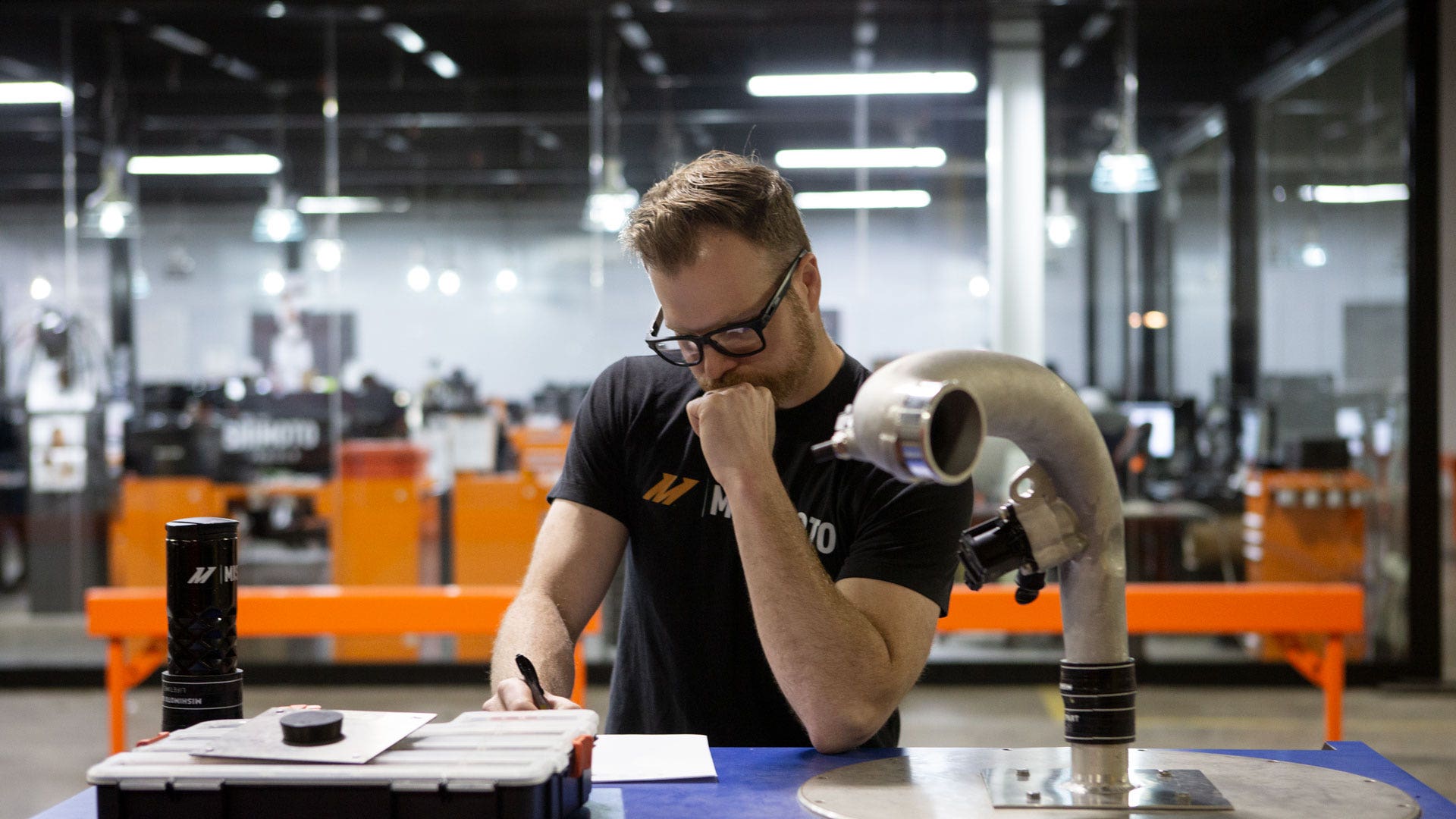
Rival Nature's Power - Intercooler Pipe R&D, Part 4: Testing Continues
As the weather grows colder here on the east coast, there's a collective smile forming on the faces of select drivers everywhere. Those of us whose engines come equipped with their own mini hurricane know this time of year as "boost season." The colder weather means denser air, and denser air means the turbos under our hoods force more air into the engine. More air means more fuel, and more fuel means more power. It might just be a placebo effect from driving with the windows down, the chill of the wind blowing in your face, and hearing the whoosh of the turbo, but fall to the driver of a turbocharged vehicle feels like Mother Nature loaned us a small piece of her power for the next few months.
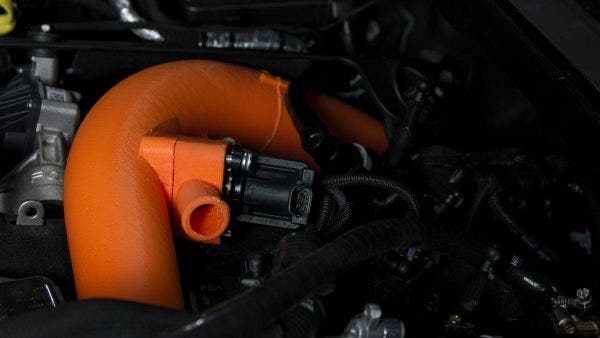
The colder weather here in Delaware is also spurring us to finish our 2018+ Jeep Wrangler JL 2.0T intercooler pipe so that you can hold onto a piece of nature's power all year. Our last post ended with flow benching the stock intercooler pipe. The stock pipe's pressure drop ranged from 0.39 inH2O at a flow rate of 25 CFM, to 11.75 inH2O at 200 CFM. Before we began casting the production sample of our intercooler pipe, we wanted to flow bench our 3D printed prototype to make sure our design would flow better than stock. So, Jason swapped the stock pipe for our 3D printed prototype and repeated the flow bench test exactly as he had for the stock pipe.
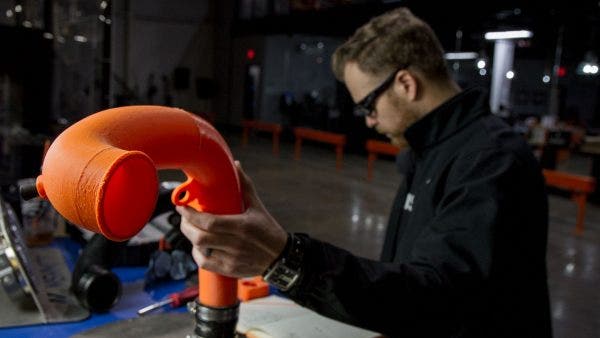
At the end of the flow bench test, we were happy to see that the 3D printed prototype flowed an average of 27% better than the stock pipe. Seeing the greatly improved flow of the 3D printed pipe made us even more eager to make our production sample. The inside of the 3D printed prototype is ridged and uneven compared to the smooth cast aluminum that our final product will be made from. So, if the rough 3D printed pipe flowed 27% better than the stock pipe, our cast pipe should flow even better.
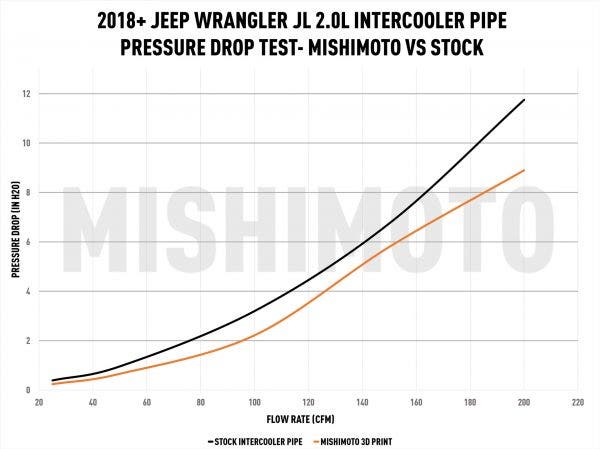
We confirmed that our design was superior to the stock pipe on the flow bench, but the true test would be how it performed on the vehicle. Unfortunately, the plastic of our prototype would only melt from the high heat of the engine bay. That meant it was time to bring our intercooler pipe to life as an aluminum piece. We sent the drawings off to manufacturing and hunkered down for a wait. Casting aluminum is a complex process of creating molds and machining, so patience is essential to a achieve a good outcome. To save a little time in manufacturing, we decided not to powder-coat our first sample that would be used for testing. After a long wait, our production sample was complete, and Jason could run the flow bench test one more time.
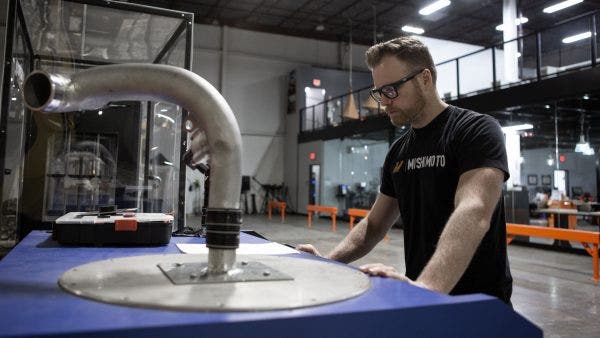
The flow bench test was conducted exactly as before with the 3D printed prototype and stock pipes and the results were surprising. We knew the cast aluminum pipe would flow better than the 3D printed pipe due to the smoother interior, but we didn't think it would be more than 5% better. Well, we were wrong. The cast aluminum pipe flowed 11% better than its 3D printed brother, bringing our total flow increase over the stock pipe to 36%. It's amazing how much flow could be gained by just removing some extraneous facets and smoothing the pipe.
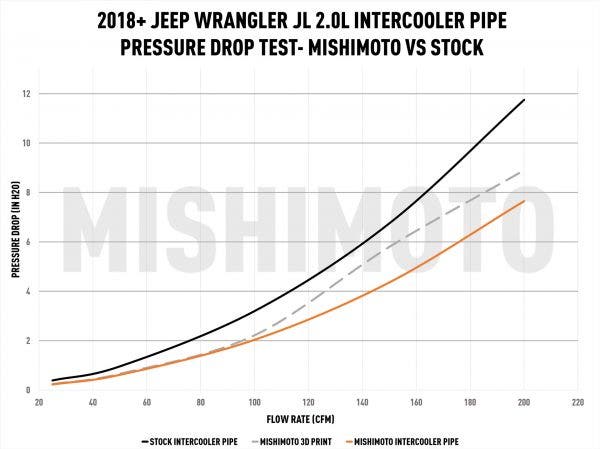
Extra flow is great, but the true test will be how the intercooler pipe performs on the dyno. As we found with our 2018+ JL 2.0L intake, more flow doesn't always translate to more power. In the next post, we'll install our 36% better flowing intercooler pipe on our JL and run it on the Dynojet to see if we can squeeze any more of nature's power from the 2.0L Hurricane engine. Our next post will also be the last post before this intercooler pipe goes on discounted pre-sale, so be sure to keep an eye out for that announcement and, if you haven't already, subscribe to our newsletter to receive the latest sales and development updates for your JL.




